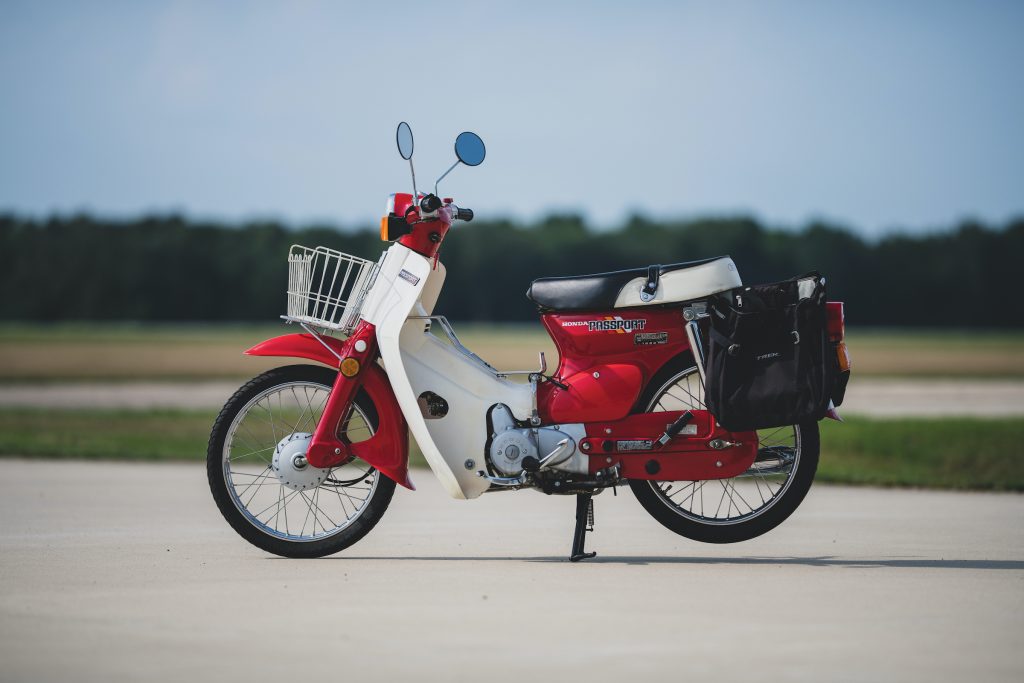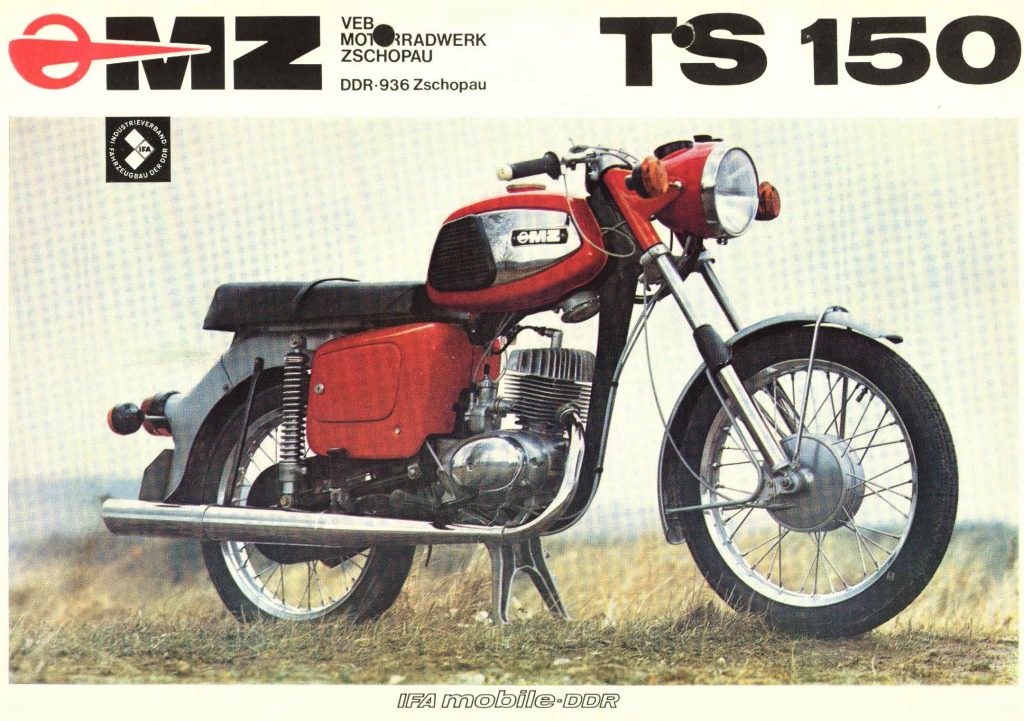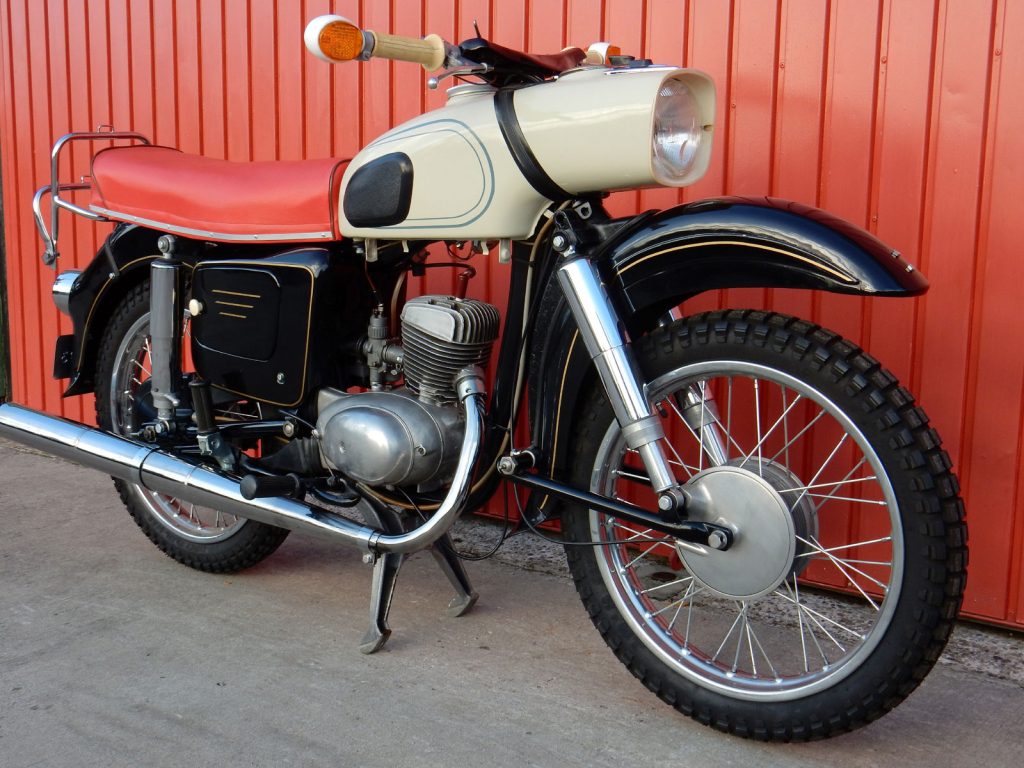There’s a band of classic bike-riding people who literally don’t know what they’re sitting on.
They are the it-ain’t-broke-so-don’t-fix-it brigade, who’ve had their functional reliable-as-clockwork commuter bike for ages, and it never crosses their mind to change it.

And some are astride potentially very desirable ‘unexceptional’ bikes, especially the likes of the round headlight Honda C50 and its other Cub siblings. These can fetch very strong money from enthusiasts and collectors who are prepared to spend a small fortune on good original-condition bikes – despite the fact these bikes were designed to be mass-produced (more than 100 million have been made) and cost-effective for riders. They were not aspirational products, but designed to mobilise large parts of the world’s population.
A measure of enthusiasm toward the Honda Cub is the 19,000 members of the C90 Club. Meanwhile, approaching fast from behind (or should that be approaching leisurely?) are the likes of MZs. About as styled as a garden shed, they share a similar functionality to the basic Hondas but a very different image for more eccentrically-minded day riders.
The Hondas have simplicity built in. There’s not much to go wrong, and maintenance demands are rudimentary. MZ engineering has its roots in pre-WWII East German motorcycle design. They’re also built to last, with age-old tech that’s seen it all and brushed it off, other than eventually fragile electrics. The two have little in common design-wise, but masses in terms of use: they are the bikes which either kept nations moving or got them moving in the first place. And right now, these under-the-radar classics are being discussed in certain circles as, if not the next big thing, then at least a part of the motorcycle market that enthusiasts are talking about now that they can get together, ride together and enjoy a pint together.

Adrian Mortimer, 49, of OO Racing in Sandwich near Dover, Kent, builds tuned engines for Honda Cub racing teams participating in a sport that’s as mad – and slow-paced – as it sounds. Once leaving the start line, the bikes are uninterruptedly flat-out, almost irrespective of the need for taking any corners, until the chequered flag.
But it’s his road-going Cub anecdotes that typify the closeness between the perception and reality of legendary C90 resilience. “We bought a Cub for £15 as a field bike when I was 14. We had a motorcycle repair business in Canterbury at the time, and it became the shop bike and the, er, ‘courtesy bike’,” he told Hagerty.
“We had it for years; it always started and ran whether it had petrol, paraffin or white spirit in the tank, and I think we changed the oil every twelve years. It never failed an MOT until it developed a bit of corrosion. The engine and gearboxes never break.”
Honda’s 1958 original had a monopoly to begin with, but eventually spawned a generation of minimal-cost and minimal-maintenance step-through bikes, and a raft of scrambled-to-launch competitor clones. They were designed for someone who had no interest in the hobby of motorcycling and riding for pleasure, someone who just needed to get from A to B and home again, but nowadays they are embraced by what seems like ten times as many Cubnuts as the commuters who probably only ever paid any attention to them when fuelling up once in a blue moon.
Where once such widely available bikes would sell secondhand for hundreds or even tens of pounds, today a really good round-headlight original Honda Cub can be £5000 to £6000, or even more. The square headlamp versions will likely one day have their time in the premium price limelight, but can still go for £3000 to £4000 – enough to get you a brand-new 125cc Super Cub straight from the dealer.
Frank Hayes of Steel City Classics attempts to put his finger on the appeal of this utility vehicle. “The Honda Cub and Super Cub became popular in the ’70s and ’80s as reliable commuters,” says Hayes. “They started life as a C50 in the late ’50s, but eventually included versions from 50cc to 100cc, and a 90cc trail version, all single cylinder 4-stroke. It was and still is a simple, no-nonsense, reliable, easy-to-maintain bike and in normal times used for commuting and delivery work by people from all walks of life.
“My first job as a 16-year-old saw one of my co-workers alternating between his C90 and MZ250 throughout the week in all weathers, all year, without either of them once letting him down.
“We worked for a fabrication company, which backed onto a railway line. A bit naughty, and a very different era, but we once got locked in the yard and he took his C90 through the fence and rode half-a-mile over the track sleepers to get it out onto the road, which took some doing but the tough little bike emerged without damage.”
Meanwhile, in MZ-world, every day at about the same time there’s a bloke who rides past my house on an ancient MZ TS150. He changes up a gear right outside my front gate. YUUUUUURRRMMM, ding-ding-ding-ding… yeeuuuurmmmmmm…

Judging by his grimy hi-vis jacket and lopsided rucksack, I have him down as a hard-working shift type. The bike in a different life would be treated like a classic, but his machine is clearly a functional, get-me-to-work machine.
Phil Speakman runs the nine-years-established MZ Shop in Liverpool. A former telecoms engineer who has worked as far afield as Afghanistan, he bought his first MZ as something to do while waiting for parts for another bike he was restoring just before he opened his shop
“Best thing I ever did. A lot of people don’t get that while MZs are utilitarian, they were extremely well made and reliable. The old German Democratic Republic needed foreign currency after the Second World War, so while the bikes were high quality they were sold cheap. But they did get a reputation as being unreliable because they were cheap to buy and people maintained them on the cheap. They were often bodged, but they’re robust machines and easily restorable, especially the TS models.
“I’ve got five I’ve been restoring during lockdown. Right now good ones sell for £2000 to £2500 but in four or five years they’ll be worth £4000. Get one fixed and right, and it’ll be good for 30 years running. People do use them as daily rides, and I have a few eccentric customers who commute on theirs.”
James Mather of the thousand-strong MZ Riders Club says the likes of a 1970s “I wouldn’t be seen dead on one of those” MZ Trophy, with its integrated headlamp and fuel tank, are now amongst the most desirable of all MZs.
“In the 1970s and 1980s – the bikes were not officially imported before about 1970 – it was completely different and the majority were purchased to go to work, not to impress your mates. Nevertheless, London couriers would be using MZs if they couldn’t afford the Honda CX500.”
Back in Honda Cub-land, picture this: Knee-slider buried in the tarmac, bike on the edge of grip as it’s slung up the inside of another racer, the rider – hanging off the seat – and bike in all-over Repsol Honda branding. Marc Marquez at work? Nope, some lad on a Honda Cub squeezing out every last one of its tuned 9bhp in one of the least-fast competition classes there is – motorcycling’s retort to 2CV car racing.
For a no-nonsense, historically significant motorcycle, the Honda Cub is as versatile as they come. And tough as old boots with it. And the MZ is a welcome, cheaper alternative to the more obvious British, Italian and Japanese bikes that tend to dominate the classic motorcycle scene. You’ll find both for sale at sites such as Car and Classic, eBay and Facebook Marketplace, and occasionally they pop up on for auction through H&H. But you’ll have to move quickly as the secret is out.
These humble, classic commuter bikes are now going places in ways few of their original owners would ever have dreamed when riding them from new.
Also read
Opinion: Riding a motorcycle is the last great escape – let’s keep it that way
Barn Find Hunter: Uncovering thousands of British motorcycle masterpieces
The Young Ones: The baby-faced bikers turning to classics











I bought and sold a few C50, C90 and worked in the motorcycle trade so know how easy to work on and reliable they were. I guess I only have seen MZs on the road but the look of them puts me off. I can see the appeal of them though.